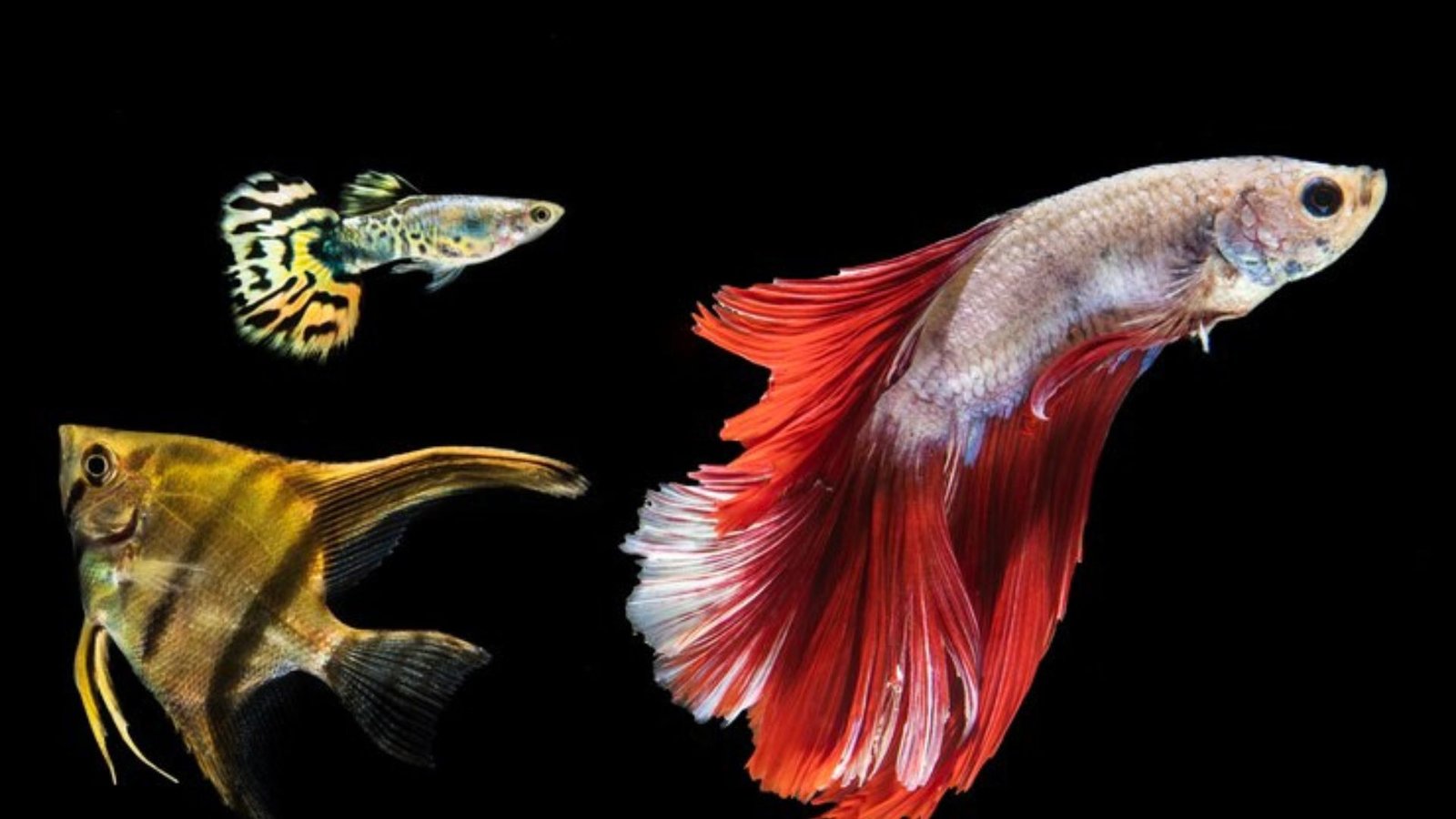The giant betta fish, scientifically known as Betta splendens, is a striking and captivating species of freshwater fish. A variation of the traditional Siamese fighting fish, the giant betta has gained immense popularity among aquarists due to its larger size and vibrant colors. While the standard betta fish typically measures around 2-3 inches in length, the giant betta can grow up to 4 inches, making it a more prominent feature in any aquarium. In this article, we’ll explore everything you need to know about giant bettas, from their natural habitat to care tips, behavior, and breeding.
What Makes the Giant Betta Fish Unique?
Giant bettas are known for their robust size and brilliant colors. These fish possess the same striking qualities that made their smaller counterparts famous, such as their flowing fins and vivid hues. However, the key distinction lies in their size. The giant betta was selectively bred to achieve a larger, more impressive form, while retaining all the captivating traits of the original species. Their vibrant colors, which range from shades of blue, red, and green to even purple and yellow, make them a standout addition to any aquarium.
In terms of behavior, giant bettas are just as active and territorial as their smaller relatives, though their larger size may make them appear more dominant in their environment. Despite their intimidating appearance, giant bettas can be kept in peaceful aquariums as long as they are provided with the appropriate care and environment.
Habitat and Tank Setup for Giant Betta Fish
Creating the right habitat for your giant betta fish is crucial to their overall health and well-being. These fish are native to the warm, shallow waters of Southeast Asia, particularly Thailand and Cambodia. Their natural habitat includes rice paddies, slow-moving streams, and ponds, where they enjoy a warm, stable environment with plenty of hiding spots.
Tank Size
Because giant bettas are larger than the average betta fish, they require a spacious tank to thrive. A minimum of 10 gallons is recommended for a single giant betta fish, though a 20-gallon tank will provide more room to roam. A larger tank will also allow you to set up different areas for hiding and swimming, which can help reduce stress and promote a healthier environment.
Water Parameters
Giant bettas thrive in warm water, with an ideal temperature range of 76-82°F (24-28°C). The water should be soft to slightly hard, with a pH level between 6.5 and 7.5. It’s essential to monitor the water quality regularly, as bettas are sensitive to changes in their environment. Invest in a reliable water filter to help maintain clean and stable water conditions.
Substrate and Decorations
Bettas enjoy having a variety of decorations and plants to hide in. Use a soft substrate like sand or fine gravel to avoid damaging their delicate fins. Live plants, such as Java fern, Anubias, or Amazon sword plants, are ideal because they provide natural hiding spots and help improve water quality by absorbing excess nutrients.
When choosing decorations, avoid sharp objects that could injure your giant betta. Smooth decorations, driftwood, and caves will create an enriching environment for your fish to explore and feel secure.
Feeding Your Giant Betta Fish
Feeding your giant betta fish a balanced and nutritious diet is vital to their health. Like all bettas, giant bettas are carnivorous and require a protein-rich diet. You can feed them a variety of high-quality betta pellets, frozen or live foods such as bloodworms, brine shrimp, and daphnia.
Feed your giant betta fish once or twice a day, offering small portions that they can consume in about two minutes. Be careful not to overfeed, as this can lead to obesity and water pollution. Regular water changes are essential to ensure that uneaten food does not compromise the water quality.
Supplemental Foods
In addition to their main diet of betta pellets, it’s beneficial to offer your giant betta occasional treats such as:
Bloodworms: These are a great source of protein and are loved by most bettas.
Brine Shrimp: Rich in essential fatty acids, brine shrimp are another excellent addition to their diet.
Daphnia: Often referred to as water fleas, daphnia are high in fiber and help with digestion.
It’s important to rotate between these foods to ensure that your betta receives a varied and balanced diet. Always ensure that the live foods you offer are from a reputable source to prevent introducing harmful parasites or diseases.
Behavior and Temperament of Giant Betta Fish
Giant bettas are known for their bold and territorial behavior. In the wild, bettas are solitary creatures that fiercely defend their territory. This behavior is also evident in the aquarium, where giant bettas may display aggression toward other males or similar-looking fish.
Interaction with Other Fish
Although they are generally peaceful towards females and non-betta species, male giant bettas may become aggressive toward other males, especially if they are housed in too small of a space. It’s best to house giant bettas alone or with peaceful species that won’t provoke them.
If you wish to keep multiple bettas in the same tank, you should either separate them using dividers or ensure that the tank is large enough for each betta to establish its own territory. Always monitor their interactions closely and be prepared to remove an aggressive fish if necessary.
Signs of Stress or Illness
Like any fish, giant bettas are susceptible to stress and illness. Signs of stress include:
Loss of color or faded fins
Lethargy or decreased activity
Loss of appetite
Common diseases in bettas include ich, fin rot, and swim bladder disease. If you notice any signs of illness, quarantine the affected fish immediately and treat them according to the symptoms. Regular water changes and a clean environment will help prevent many health issues.
Breeding Giant Betta Fish
Breeding giant bettas is possible, but it requires careful planning and a separate breeding tank. To breed giant bettas, you’ll need to set up a breeding tank with similar water parameters as those found in their native habitat. The water temperature should be kept between 78-80°F (26-27°C), and the water should be soft and slightly acidic.
Pairing the Fish
Select a healthy male and female giant betta fish for breeding. The male will build a bubble nest at the water’s surface, which is an indication that he is ready to mate. Once the bubble nest is established, introduce the female to the breeding tank. The male will court the female, and if she is ready, they will engage in a mating ritual.
After spawning, remove the female from the tank, as the male will become territorial and aggressive toward her. The male will guard the eggs in the bubble nest until they hatch, typically within 24-36 hours. After hatching, the fry will remain in the nest until they are free-swimming, at which point you can begin feeding them infusoria or other appropriate fry foods.
Giant Betta Fish Tankmates
When selecting tankmates for your giant betta, it’s essential to choose peaceful species that won’t provoke the betta. Some good options include:
Corydoras Catfish: These bottom-dwelling fish are peaceful and won’t compete with the betta for space or food.
Neon Tetras: Small, colorful fish that usually avoid aggressive behavior.
Snails: Snails like mystery snails or apple snails make great tankmates because they stay out of the betta’s way and help with cleaning.
Avoid keeping giant bettas with other bettas, aggressive fish, or species with long, flowing fins, as these may trigger the betta’s territorial behavior.
Conclusion
The giant betta fish is a remarkable species that brings beauty and personality to any aquarium. With the right care, they can thrive and live a long, healthy life. Be sure to provide them with a spacious tank, proper water conditions, and a balanced diet, while keeping their territorial nature in mind when selecting tankmates. By following these guidelines, you can enjoy the company of your giant betta for years to come.
ALSO READ:Bintex For Embedded String Analysis: A Comprehensive Overview
FAQs
Can I keep a giant betta with other fish?
Yes, but it’s best to keep them with peaceful species and avoid other bettas or aggressive fish.
What size tank does a giant betta need?
A minimum of 10 gallons is recommended for a single giant betta, though a 20-gallon tank is ideal.
How often should I feed my giant betta fish?
Feed your giant betta once or twice a day, offering small portions of food they can consume in about two minutes.
How can I tell if my giant betta is stressed?
Signs of stress include fading color, lethargy, or a loss of appetite.
Can giant bettas live with other bettas?
It’s generally not recommended to house male giant bettas with other bettas, as they are territorial and may fight.











